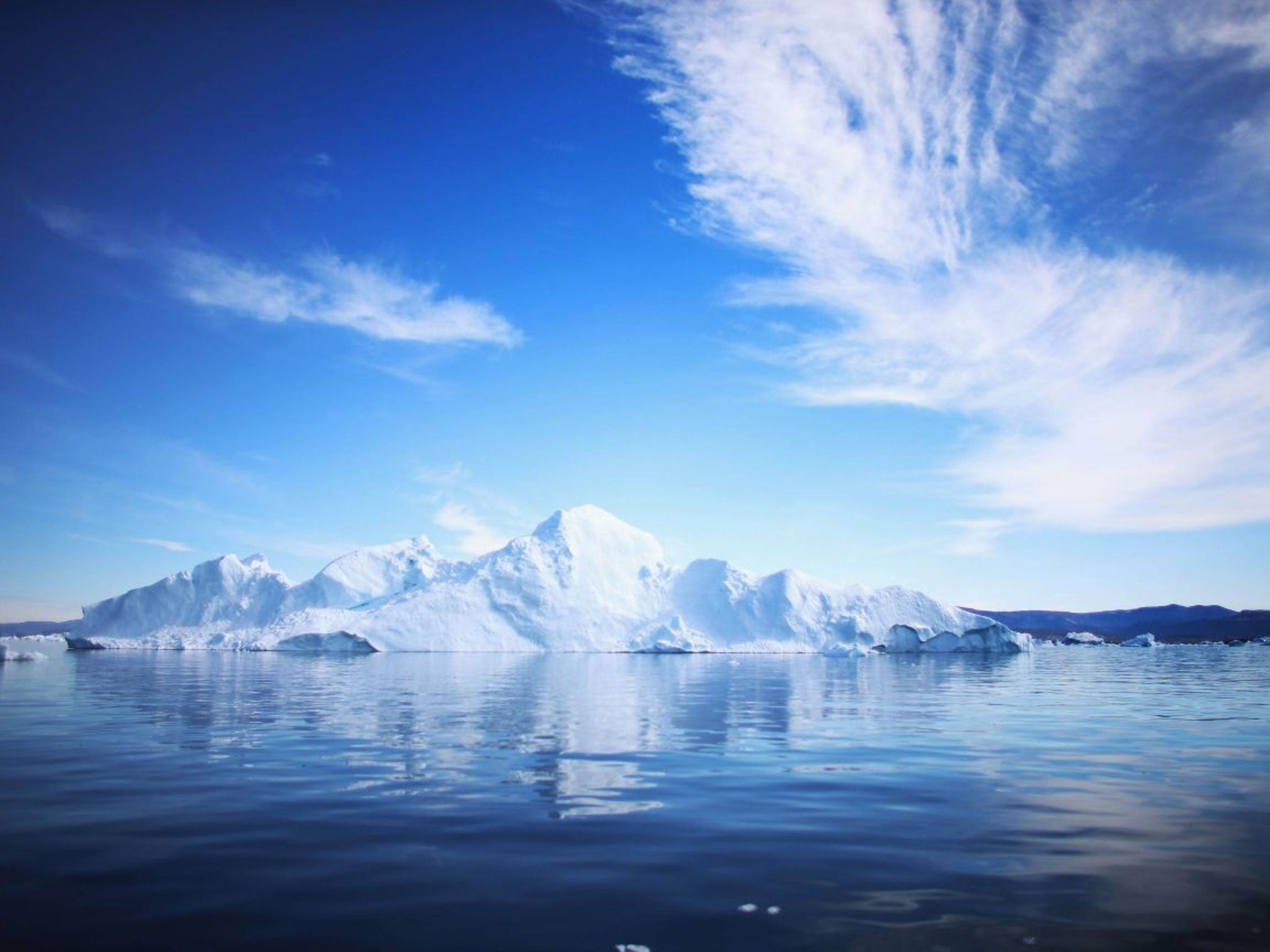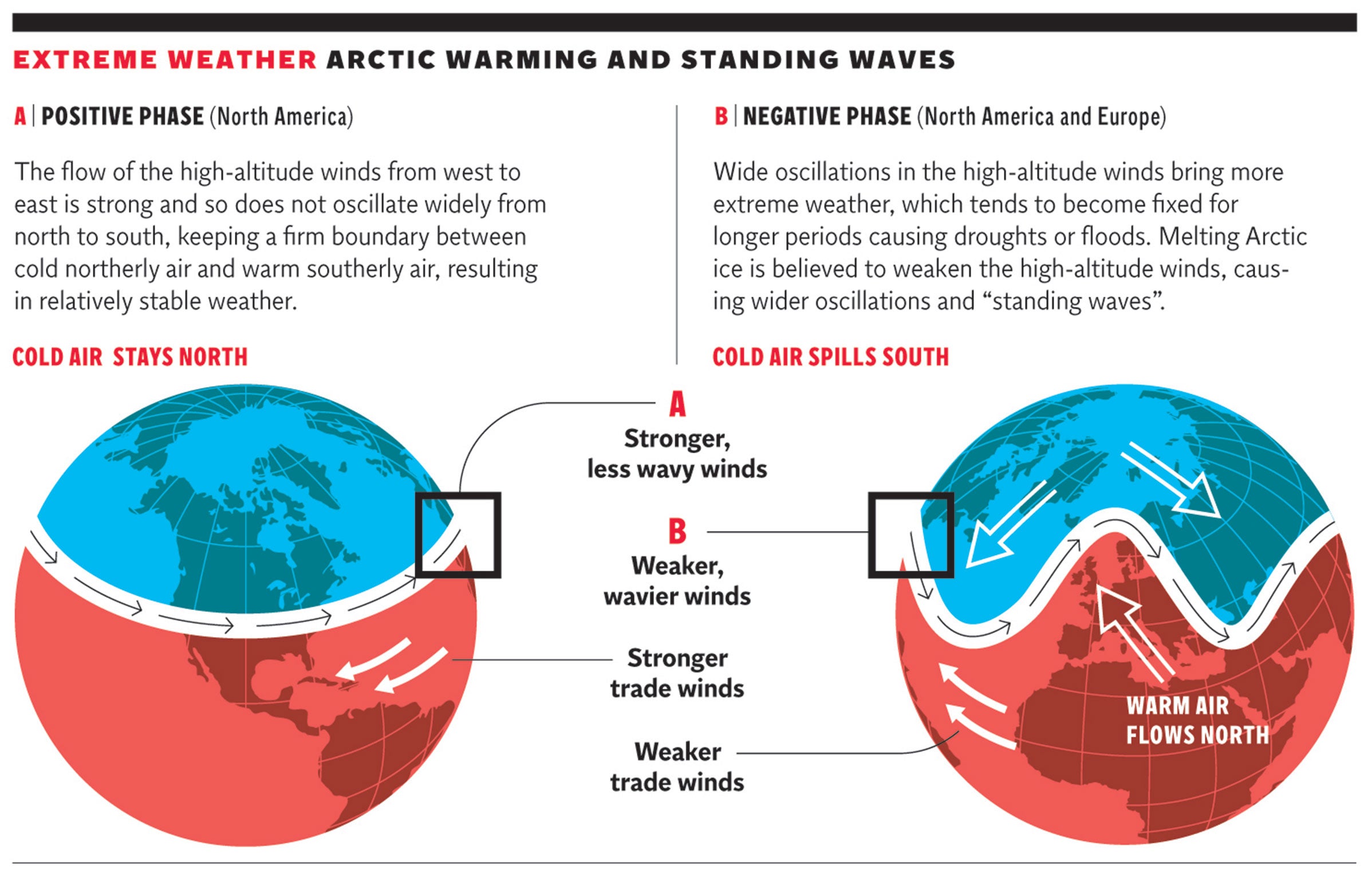Global warming: Rapid rise in Arctic temperatures linked to changes in extreme weather and global wind patterns

Scientists have linked the rapid rise in Arctic temperatures over the past two decades to weather extremes in the northern hemisphere such as heatwaves in the US and flooding in Europe.
Temperatures in the Arctic have risen twice as fast as the rest of the world since 2000, and this could have triggered changes to global wind patterns, which have brought extreme weather to lower latitudes, the researchers said.
A study has found that the number of extreme weather events, such as heatwaves, floods and droughts, has almost doubled over the same period and that this increase can be linked with unusual wind patterns in the upper atmosphere, influenced by warmer Arctic temperatures.
The researchers believe that the loss of sea ice in the Arctic may be contributing to the appearance of wide north-south swings in the high-altitude winds flowing globally west to east around the polar region, which can become stuck and amplified in a quasi-stationary pattern known as a “standing wave”.
When this high-altitude westerly airstream swings north it sweeps warm air from the tropics over Europe, Russia or North America, and when it swings south it sucks in frigid air from the Arctic. Each weather pattern can last for several weeks, causing extreme heat, cold, drought or flood.
Scientists from the Potsdam Institute for Climate Impact Research in Germany believe they have found evidence to support the idea that the warming of the Arctic is causing these standing Rossby waves to become stuck in a static pattern as they resonate around the planet for weeks at a time, bringing extreme weather to whatever region of the northern hemisphere they affect.
“Evidence for actual changes in planetary wave activity was so far not clear. But by knowing what patterns to look for, we have now found strong evidence for an increase in these resonance events,” said Stefan Rahmstorf, a climate researcher at the Potsdam institute.

“There is a subtle resonance mechanism that traps waves in the mid latitudes and amplifies them strongly,” said Dr Rahmstorf, one of the coauthors of the study, published in the journal Proceedings of the National Academy of Sciences.
Other scientists have suggested that the steepness of the cold-hot gradient of air temperatures from the Arctic to the equator can affect the speed or pattern of high altitude winds such as the jet stream flowing from west to east around the globe.
This temperature gradient becomes less pronounced as Arctic temperatures increase at a faster rate than the more southerly latitudes, causing the wind patterns at high altitudes to change, notably the appearance of standing Rossby waves that flow in wide sweeps north.
“The large number of recent high-impact extreme weather events has struck and puzzled us. Of course we are warming out atmosphere by emitting CO2 from fossil fuels, but the increase in devastating heat waves in regions like Europe or the US seems disproportionate,” said Dim Coumou of the Potsdam institute, the lead author of the study.
“We have detected important changes in the upper-level wind fields that flow around the globe and we see an increase in the frequency of standing waves which we know can cause weather extremes. We argue that they are linked with a rapid warming of the Arctic which creates the favourable conditions for this to occur,” Dr Coumou said.
“Since 2000, the amplification of Arctic temperatures has really taken off and the temperature gradient from the equator to the pole has changed as a result, meaning conditions are favourable for this mechanism to occur. However, we have only found a correlation, not a causality and we’d need to do further work to establish this as a cause,” he said.
Join our commenting forum
Join thought-provoking conversations, follow other Independent readers and see their replies
0Comments